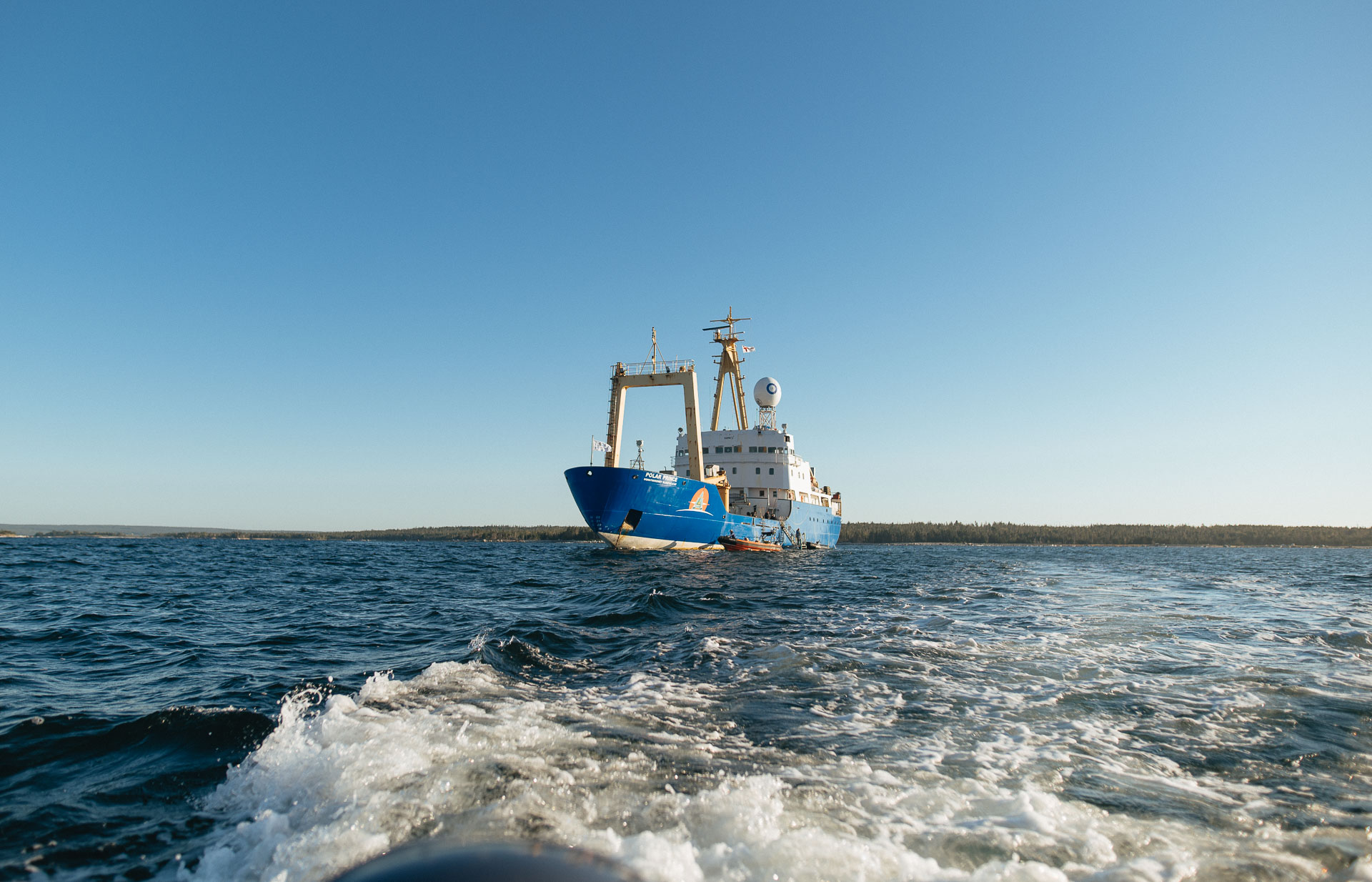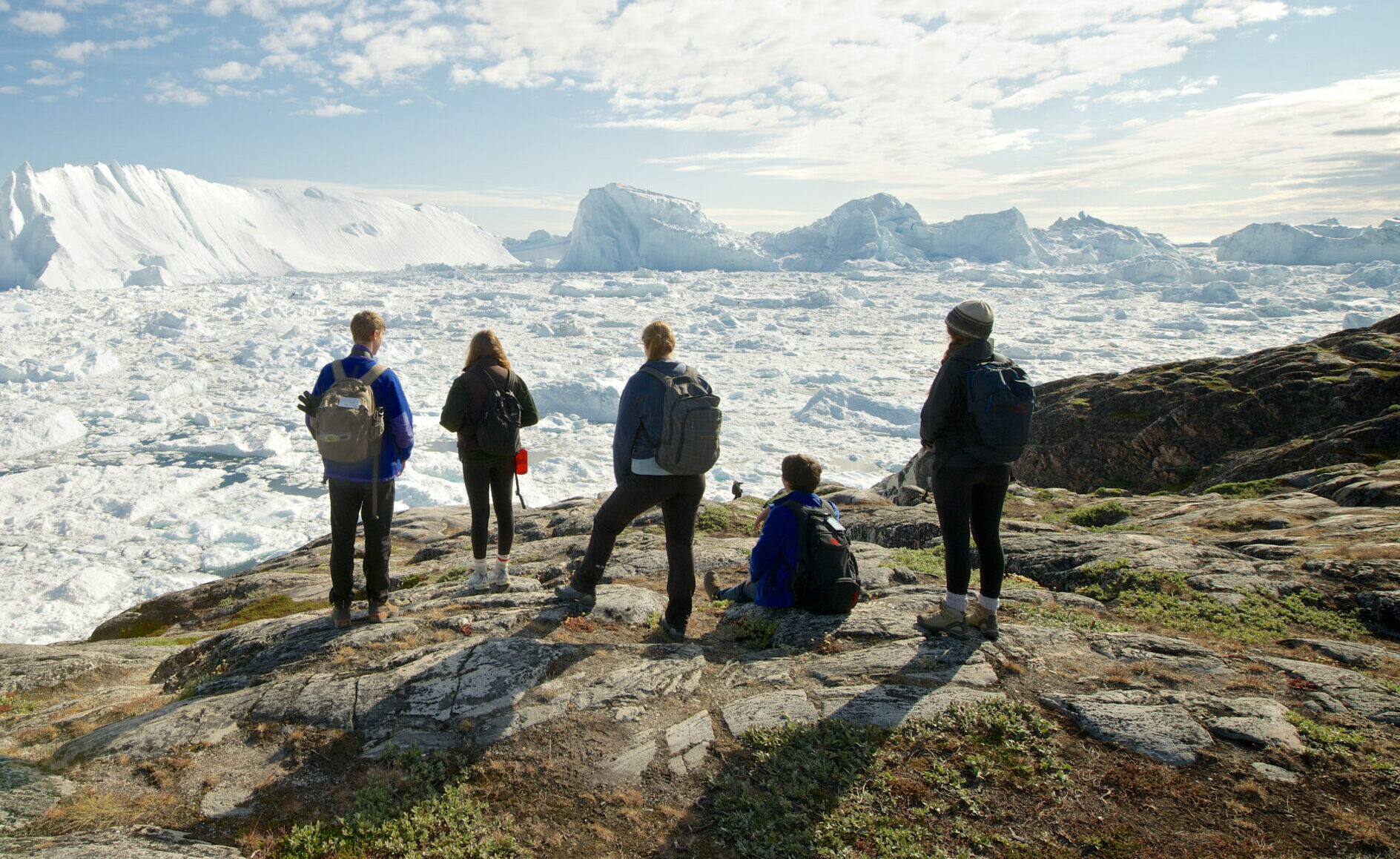Cape Breton and Sable Island NPR Expedition 2022: Days 4-6
The adventure continues! Our first night at sea was, let’s just say, easier on some than it was on others. A few of the team will need to work on getting their sea-legs a bit more firmly under them. The next morning we woke up to a foggy morning at St. Paul Island. Luckily, by the time we were anchored and had prepared the zodiacs the fog had lifted enough for us to go exploring. We made land at Trinity Cove, where Peter Croal, a member of the Royal Canadian Geographical Society, gave us a background on the geology of the surrounding area. As it turns out, Trinity Cove is the eroded remnant of a billion year old mountain chain, made up of granite and gneiss – nice! As the sun came out and the day warmed up, we dove into some activities on the beach. George challenged us all to a rock stacking contest and Katriina set up a workshop with a seine net where we caught a sculpin, gunnel, and some ctenophores. Some of us spent time fishing and relaxing on the beach, taking the time to appreciate the land we are visiting. After a while, we all boarded the zodiacs and toured some of the nearby coves where we noticed a couple of fishermen pulling in their lobster traps. Geoff sped over to introduce himself and the expedition, and even offered to buy some of their fresh catch. As quickly as he left, he came back with FIFTY lobsters for us to enjoy later. The amazing culture and kindness famous to Unama’ki continues to shine through on this expedition.

In the afternoon we set sail for Bras d’Or Lake. While we sailed George conducted a songwriting and journaling workshop, and Katriina prepped and introduced some of the scientific gear we will be using over the coming days. We also had some pilots join us on board to navigate the section of water ahead as we prepared to enter Bras d’Or Lake. That night, we had an incredible dinner of, you guessed it, fresh-caught lobster! As we arrived in Bras d’Or Lake we all gathered on the bow of the ship for a debrief of the day. Amy took on the challenge of naming everyone on board the Polar Prince – only 4 days in and she could name all the students and educators – impressive!
Day five of our expedition was full of history and innovation. We kicked off our day with a zodiac ride to Baddeck, home of the Alexander Graham Bell National Historic Site. Here we got to learn just how much of an inspiring power couple Alexander Graham Bell and his wife, Mabel, were. Now part of Parks Canada, this National Historic Site contains the largest collection of artifacts and documents from Bell’s years of experimental work in Baddeck. We were fortunate enough to experience the “white-glove” version of the tour, where our guides presented us with rarely seen artifacts from Bell’s life including blueprints, maps, diaries, audio recordings, and some small trinkets and inventions. This place truly holds the spirit of innovation.
“The inventor… looks upon the world and is not contented with things they are. He wants to benefit the world; he is haunted by an idea. The spirit of invention possesses him, seeking materialization.” Alexander Graham Bell
In the afternoon we took a quick zodiac ride over to Beinn Bhreagh, the Alexander Graham Bell Estate situated on a 600-acre peninsula jutting into Bras d’Or Lake. Built in 1892-93, Beinn Bhreagh Hall was the summer residence, estate, and laboratory of inventor and scientist Alexander Graham Bell and his wife, Mabel Bell. Beinn Bhreagh translates to “Beautiful Mountain” in Scottish Gaelic but the Mi’kmaq knew this place as “Megwatpatek” which roughly translates to “Red Head” thanks to the reddish sandstone at the edge of the peninsula. Bell’s family worked hard to preserve the estate just as it was in 1893 – it was just like walking 100 years into the past. Mabel was a dedicated gardener, and as a result, there are some beautiful species of plants on Beinn Bhreagh including Japanese Oak. We all hiked to the top of the “Beautiful Mountain” to visit the memorial established for Alexander and Mabel. To show our respect and gratitude, Ryan Toney conducted a tobacco offering to honour their spirit. After taking a moment to appreciate our surroundings, and take in the incredible views we made our way back down the mountain. Upon our return, we were greeted by The Beinn Bhreagh Band, a newly formed supergroup made up of Ryan on drums, Emma and Delaney as backup vocalists, Jody throat singing, George on guitar and vocals, and Beez on the fiddle. We danced, we laughed, then we made our way back aboard the Polar Prince and out into the Atlantic towards Sydney harbour.

Starting our day in Sydney on day 6, we boarded a bus to Goat Island in Eskasoni and were welcomed by Arctic 2018 alum Dre Toney. A beautiful walking path led us around the island, where different stations were set up to teach us about the many facets of Mi’kmaw life. We learned about traditional dances, medicines, hunting and fishing were just some of what we learned about. Dre and Ryan led us all in a smudging ceremony conducted with an abalone shell and an eagle feather. Afterwards, we gathered around a campfire and cooked ‘4 cents cake’ over the open flame, and made bookmarks from white ash and sinew.

In the afternoon we travelled to Membertou. Ethan Paul, one of our youth expeditioners works at the heritage centre here, and was able to arrange a guide to teach us more about the history of his people. Our guide was able to give us a rich history of Mi’kmaq traditions and shared with us her open approach to reconciliation, rooted in neighbourly respect. Just as we wrapped the tour, a community member of Membertou surprised us with a musical performance and even gifted us a drum to use as we continue on our expedition. The Beinn Bhreagh Band was excited to have another instrument on board!
When we returned to the ship, we were all excited to see that our two newest members of the education team made it on board! Sue Abbott is a Seabird Survey Specialist from Canadian Wildlife Service and Mathieu D’Astous is the Acting Park Manager for Sable Island. It didn’t take Sue long to jump into action with a presentation about birds, which couldn’t have come at a better time considering our next stop was at the Bird Islands (also known as Kluscap’s broken canoe in Mi’kmaq legend).
Just as we finished dinner, our ship pulled up to the Bird Islands. Captain Stéphane strategically positioned the vessel so we could quickly load the zodiacs and flock towards shore before the sun set. The island definitely lived up to its name as Sue listed off the countless species of birds nesting on the rocks, and flying above us: black guillemots, atlantic puffins, razorbills, common murres, and eagles were among some of the birds that we saw. Everyone was excited to see the puffins but the highlight of the evening was when we witnessed two playful grey seal pups dive into the water – what an uplifting end to the day!
Here’s a short video highlighting some of the amazing experiences we’ve had over the last few days.
Don’t forget, this is just the halfway point of our expedition! Make sure to check out the expedition page for more updates as we work our way toward Sable Island.





